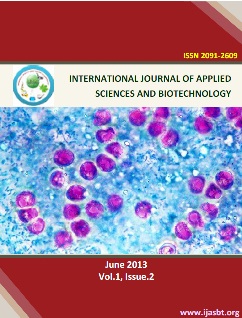Comparative genomic studies and in-silco strategies on Leishmania brazilensis, Leishmania infantum and Leishmania major: Conserved features, putative functions and potential drug target
DOI:
https://doi.org/10.3126/ijasbt.v1i2.8077Keywords:
Promastigote surface antigen, AcetylglucosamineAbstract
Leishmaniasis is a parasitic disease found largely in the tropics, which the World Health Organization has estimated infects 12 million people worldwide each year. More recently cases have been reported in Europe among intravenous drug users with HIV. At least 20 Leishmania species infect humans. New world parasite Leishmania. braziliensis is the causative agent of mucocutaneous Leishmaniasis. The old world species Leishmania. major and Leishmania. infantum, which are present in Africa, Europe and Asia, are parasites that cause cutaneous and visceral Leishmaniasis respectively. Aim of this Study is determination of major common genes and Protein identified Gene location on each of the chromosomes, and identification of a common protein drug target Promastigote surface antigen with available lead molecule acetylglucosamine (6-(acetylamino)-6-deoxyhexopyranose) and docking studies on those considered Leishmania species.
DOI: http://dx.doi.org/10.3126/ijasbt.v1i2.8077
Int J Appl Sci Biotechnol, Vol. 1(2): 63-67




